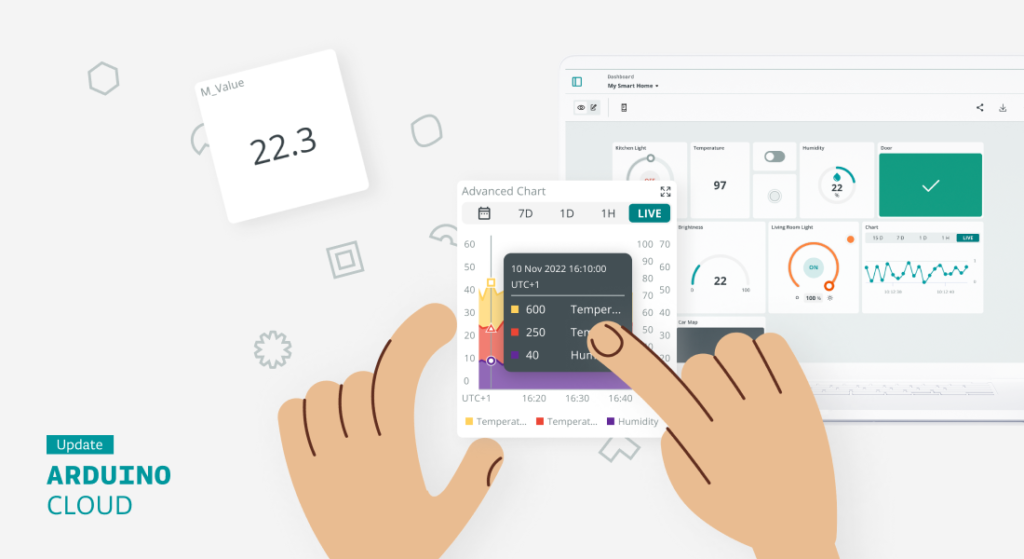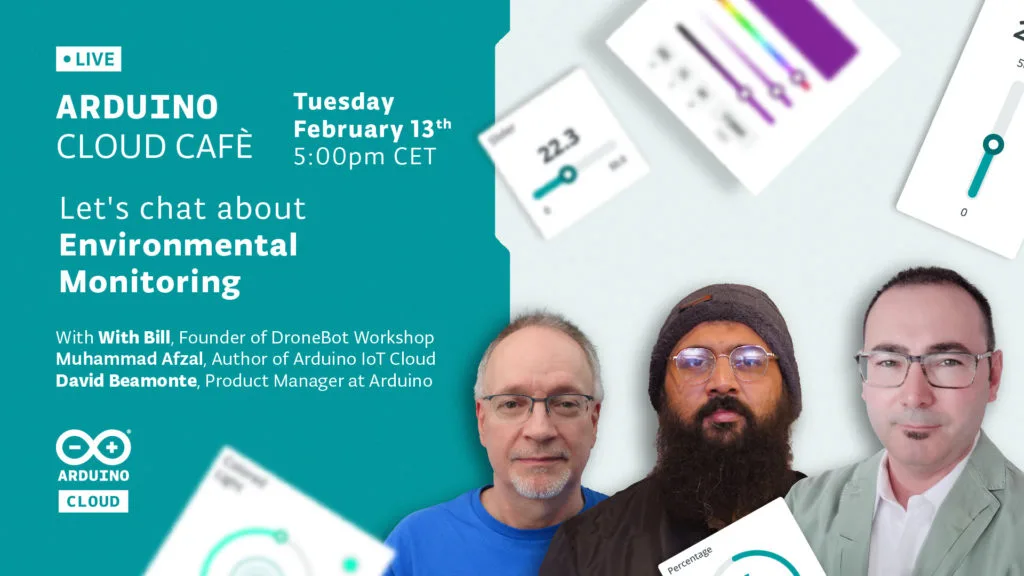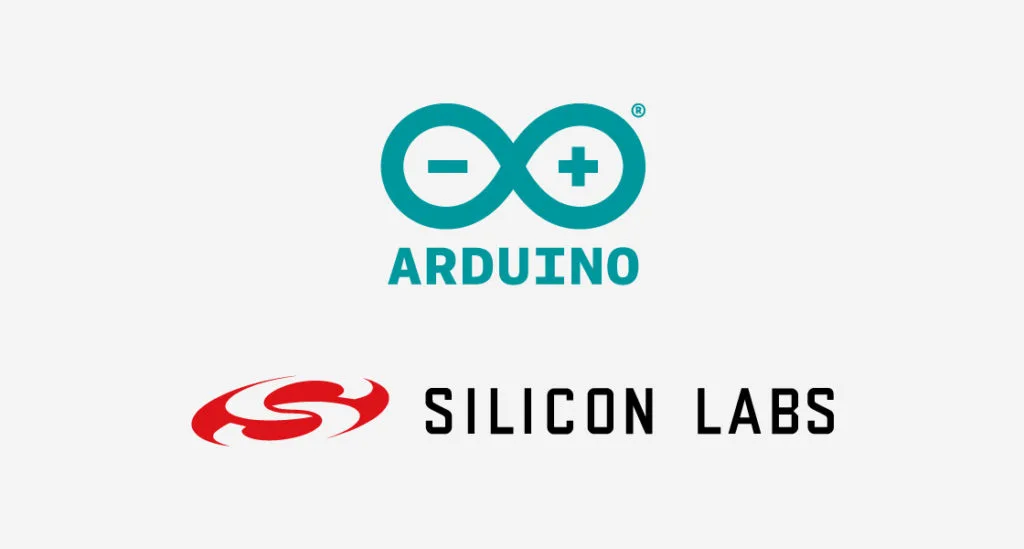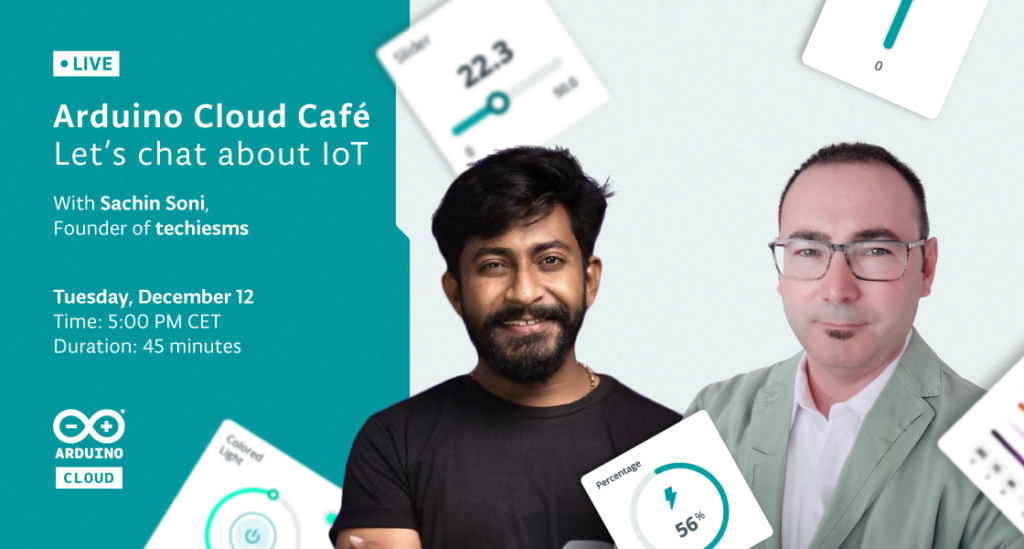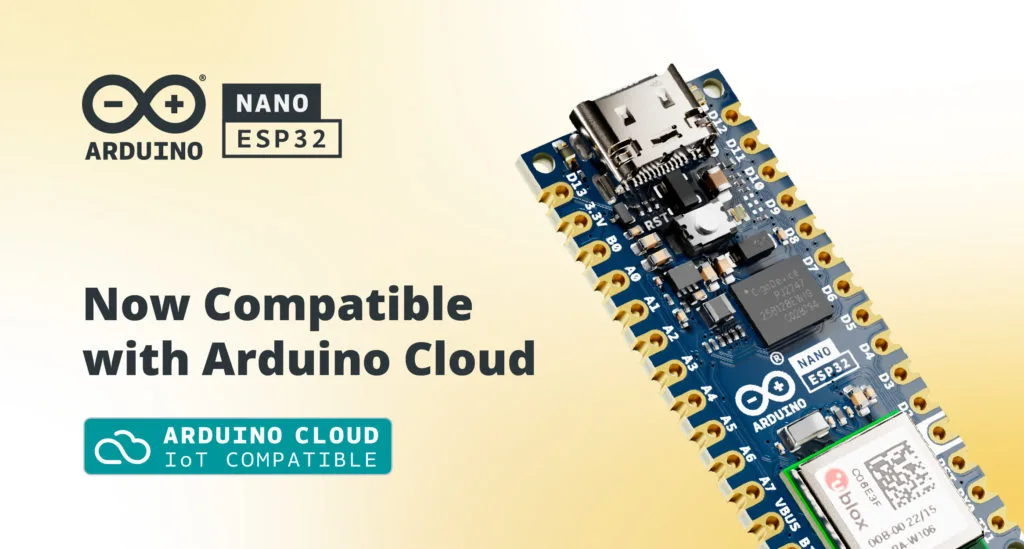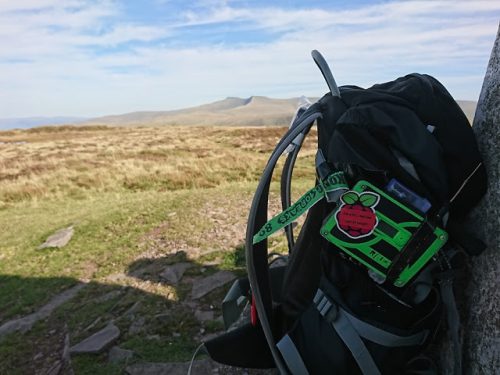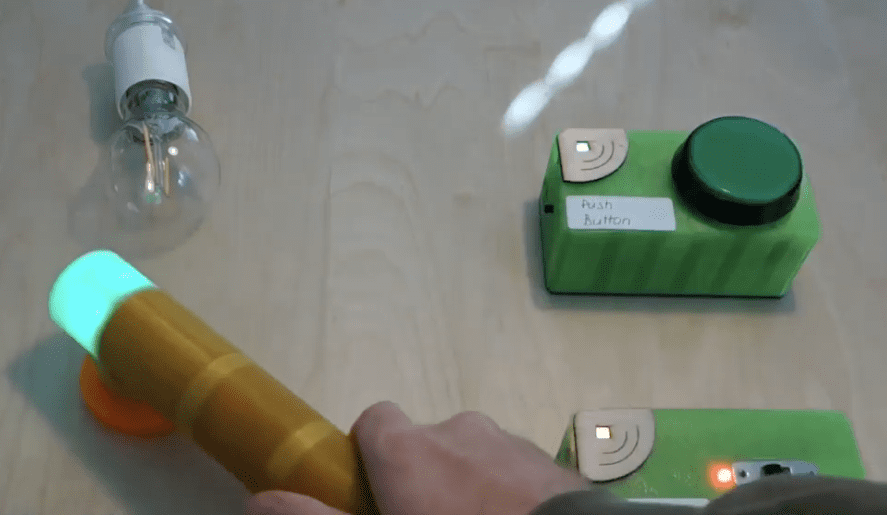Schlagwort: Internet of Things
-

4 new IoT monitoring dashboard updates on Arduino Cloud
Reading Time: 4 minutesArduino Cloud recently received a major upgrade renewing the user interface and the Arduino Cloud editor. And as we promised it was just the beginning. This article dives into some of the new IoT monitoring dashboard features that may seem small, but pack a big punch for your connected projects. 1. Duplicate…
-

Arduino Cloud Café: Let’s chat about environmental monitoring!
Reading Time: < 1 minuteExciting news! We’re gearing up for the second edition of Arduino Cloud Café, and we’re thrilled to have you join us. Tune in on Tuesday, February 13th at 5pm CET for an engaging session on environmental monitoring. This time, we have two fantastic guests — Bill from Dronebot Workshop and Muhammad…
-

Arduino and Silicon Labs team up to make the Matter protocol accessible to all
Reading Time: 3 minutesThe world of IoT just got more exciting: Arduino and SiLabs unveil plans for Matter protocol integration. In a groundbreaking development for IoT enthusiasts and professionals alike, Arduino and Silicon Labs (SiLabs) have announced a collaboration that promises to revolutionize access to the Matter protocol. This initiative is set to unfold in…
-

Arduino Cloud Café: Let’s chat about IoT!
Reading Time: < 1 minuteGet your coffee ready because Arduino Cloud Café is brewing! Join us on December 12th for an interactive session where we discuss the latest Arduino Cloud release, sip on some IoT insights, and answer your burning questions. We’re thrilled to welcome Sachin from Techiesms, who’ll not only share his experiences with…
-

Introducing support for the new Nano ESP32 board in Arduino Cloud
Reading Time: 2 minutesGreat news for Arduino enthusiasts! The new Nano ESP32, just released on July 17th, is now officially supported by the Arduino Cloud. This powerful combo brings MicroPython and IoT capabilities right to your fingertips, simplifying all your smart devices projects. The Nano ESP32‘s native MicroPython support empowers you to code in Python…
-

The Squirrel Box aims to bring trust to smart agriculture
Reading Time: 2 minutesIt may not be as exciting as other fields, but agriculture is incredibly important to humanity and technological advances have increased yields, efficiency, and productivity many times throughout history. All of the evidence suggests that smart agriculture is going to be at the heart of the next big technological leap and that…
-

The UV Budgie shows IoT alerts in a fun way
Reading Time: 2 minutesArduino Team — September 14th, 2022 The Internet of Things (IoT) is now well-established and households around the world contain many IoT devices. Most of them were designed to blend as seamlessly as possible into their owners’ lives, which means that they tend to be unobtrusive. But “unobtrusive” is the last adjective…
-

Control your Internet of Things projects from anywhere with the new Arduino IoT Cloud Remote app
Reading Time: 2 minutesControl your Internet of Things projects from anywhere with the new Arduino IoT Cloud Remote app Arduino Team — July 22nd, 2020 The perfect companion to the Arduino IoT Cloud! Develop your IoT solution online via a desktop, then monitor and control your dashboards on your mobile with the new Arduino IoT…
-

Tracking the Brecon Beacons ultramarathon with a Raspberry Pi Zero
Reading Time: 3 minutesOn my holidays this year I enjoyed a walk in the Brecon Beacons. We set out nice and early, walked 22km through some of the best scenery in Britain, got a cup of tea from the snack van on the A470, and caught our bus home. “I enjoyed that walk,” I thought,…
-

Program smart devices with a ‘magic wand’
Reading Time: 2 minutesProgram smart devices with a ‘magic wand’ Arduino Team — May 15th, 2019 Consider how interactive devices have come to dominate our lives. Once the purview of a select few in large laboratories, powerful gadgets—supercomputers even—are carried with us everywhere we go in the form of smartphones. And as everything around us…
-

HackSpace magazine 7: Internet of Everything
Reading Time: 3 minutesWe’re usually averse to buzzwords at HackSpace magazine, but not this month: in issue 7, we’re taking a deep dive into the Internet of Things. Internet of Things (IoT) To many people, IoT is a shady term used by companies to sell you something you already own, but this time with WiFi;…
